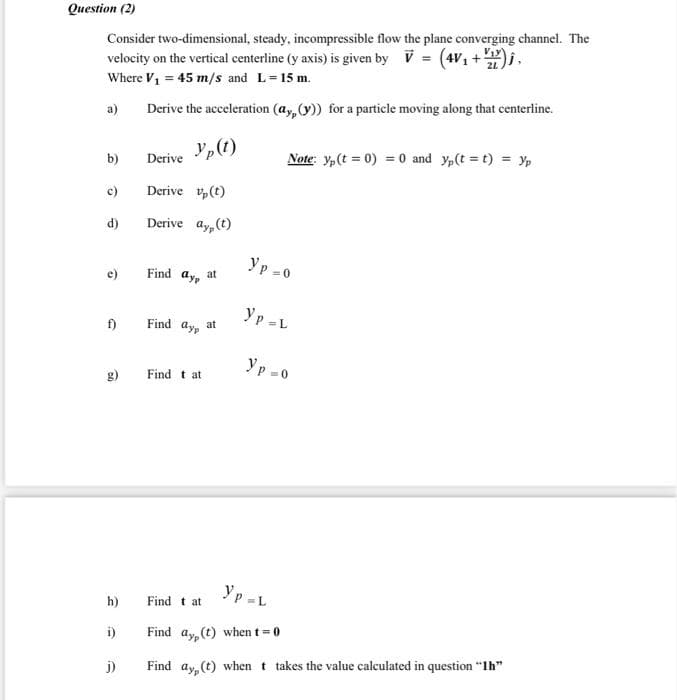Consider two-dimensional, steady, incompressible flow the plane converging channel. The velocity on the vertical centerline (y axis) is given by V = (4V1 +i. Where V1 = 45 m/s and L=15 m. a) Derive the acceleration (a,(y)) for a particle moving along that centerline. Derive Note y,(t = 0) = 0 and y,(t = t) = y, b) c) Derive v,(t) d) Derive ay, (t) yp -0 e) Find ay, at Yp -L Find ay, at Yp -0 Find t at
Consider two-dimensional, steady, incompressible flow the plane converging channel. The velocity on the vertical centerline (y axis) is given by V = (4V1 +i. Where V1 = 45 m/s and L=15 m. a) Derive the acceleration (a,(y)) for a particle moving along that centerline. Derive Note y,(t = 0) = 0 and y,(t = t) = y, b) c) Derive v,(t) d) Derive ay, (t) yp -0 e) Find ay, at Yp -L Find ay, at Yp -0 Find t at
Related questions
Question

Transcribed Image Text:Question (2)
Consider two-dimensional, steady, incompressible flow the plane converging channel. The
velocity on the vertical centerline (y axis) is given by V = (4V1 +).
Where V1 = 45 m/s and L=15 m.
a)
Derive the acceleration (ay,(y)) for a particle moving along that centerline.
Yp(t)
b)
Derive
Note: y,(t = 0) = 0 and y,(t = t) = y,
c)
Derive v,(t)
d)
Derive ay, (t)
Yp -0
e)
Find ay, at
f)
Find ay, at
Yp -L
yp -0
g)
Find t at
Yp -L
h)
Find t at
i)
Find ay. (t) when t 0
j)
Find ay (t) when t takes the value calculated in question "Ih"
Expert Solution
This question has been solved!
Explore an expertly crafted, step-by-step solution for a thorough understanding of key concepts.
This is a popular solution!
Trending now
This is a popular solution!
Step by step
Solved in 4 steps
